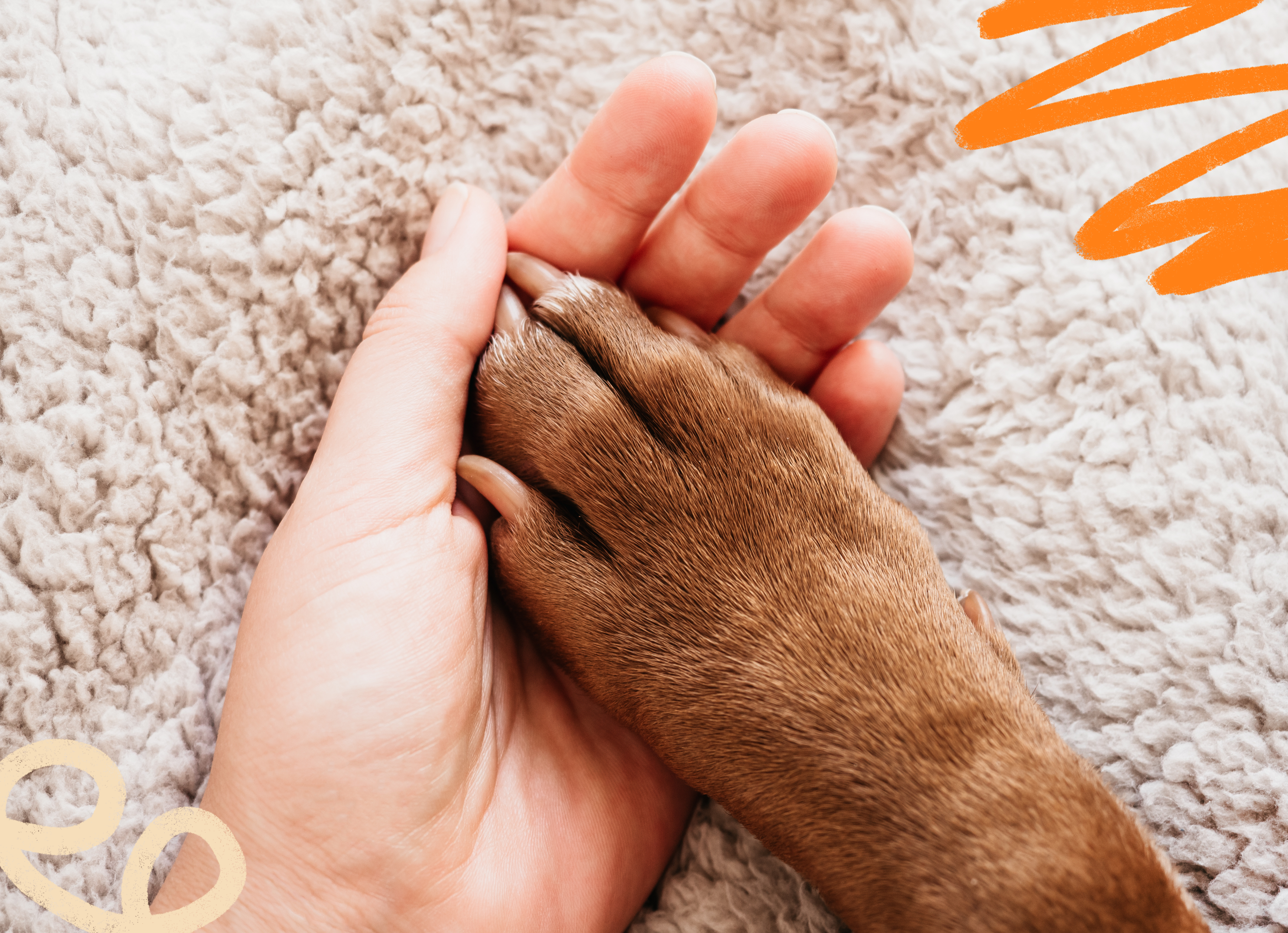
While not all parts of the country grapple with cold and ice in the winter, knowing how to care for a dog's paws is essential for all pet parents. You may wind up visiting a place that has cold temps and snow down the road. Better to learn the proper way to take care of your dog’s paws as they get exposed to the harsh elements of the frosty months.
With winter paw care, you will give those little tootsies some extra TLC and protect them from dryness, cracking, and all other paw-related winter woes.
At DOGTV, we like to be transparent: we have affiliate relationships with other companies. We may receive a commission on qualifying purchases made via the links in this article at no extra cost to you.
Understanding Dog Paw Sensitivity in Winter
Here’s the cold truth:
Dry air alone can lead to chapped, painful paw pads. At worst, dogs might get frostbite or hypothermia if they hang out in the cold for too long.
Add in the snow, and you get a whole other set of issues. Dogs walking on snow-covered surfaces might step on hidden sharp objects or debris that can hurt their paws. And those icy sidewalks and roads? Slip and fall hazards. Dogs may struggle to maintain footing, especially those with conditions like arthritis.
But those are not the only reasons you should take care of your dog’s paws. Did you know that heavily salted or chemically treated areas may result in burns on paw pads? Yup!
Dogs might also try to lick or chew their paws (before you even get to wash them off after walks) and accidentally ingest the toxic substances in salt or de-icers. This can lead to an upset stomach or, in severe cases, poisoning.
Signs of Paw Discomfort and Damage
As part of winter paw care, it's important to regularly check your dog’s paws for these telltale signs that indicate paw discomfort or damage in dogs.
- Limping: If your pup's usual swagger turns into a hobble, pay attention to any visible signs of injury. Dogs favoring one paw or showing reluctance to put weight on a specific leg might be dealing with cuts, abrasions, or irritation from salt or chemicals.
- Excessive Licking: Licking is a natural instinct for dogs to soothe discomfort. If you catch your dog partaking in too much paw-licking action, it may indicate that said paw is in pain. Address the underlying issue before excessive licking leads to further complications.
- Cracked Pads: Notice those little cracks on the paws? It's not just a cosmetic issue. It results from exposure to cold temperatures or contact with harsh substances. And a sure sign that it’s time to take extra care of your dog’s paws.
Protective Measures for Winter Paw Care
Performing regular paw checks, limiting time outdoors in extreme cold, or avoiding areas with too much salt or chemicals can help ensure optimal paw health. But to step up your game in taking care of your dog’s paws, take note of the following tips:
- Buy dog booties that are made for walking...in the snow.
Shield those paws from the freezing cold and harmful objects or chemicals (all while making your dog look stylish & cool).
When picking the perfect pair of boots, make sure they're snug enough to stay on during walks but not too tight to mess with your dog's blood flow.
You can also opt for booties with slip-resistant soles for better traction on icy surfaces.
It might take some time for dogs to feel comfy with wearing boots, so start slow. Let them get used to the boots indoors in short bursts. Then, gradually increase the duration.
- Pamper dog paws with balms and waxes.
These winter paw care must-haves work double duty.
First, they create a protective layer. (Before going for a winter walk, spread a thin, even layer of commercial paw balms like Musher’s Secret Dog Paw Wax or good ‘ol petroleum jelly onto the paw pads.)
Second, they soothe and moisturize. (After the walk, grab a warm washcloth to wipe off any residue on your dog’s paws and reapply the wax. Try Natural Dog Company Skin Soother.)
- Trim the hair between the paw pads.
Hair in this area can collect snow and ice, forming painful ice balls that may lead to discomfort and potential injuries. So, make it your winter paw care habit to keep it trimmed and avoid irritating the sensitive skin between the toes. A little grooming goes a looong way in taking care of a dog’s paws.
The health of your pup's paws is in your hands, so make sure to winter-proof them. The key is having a consistent winter paw care routine. So, check those furry feet often for any signs of discomfort or issues, and take precautionary steps to ensure they are always in good shape. When you take care of your dog's paws, winter feels like a walk in the (snowy) park!

 Caitlyn Mellor
Caitlyn Mellor